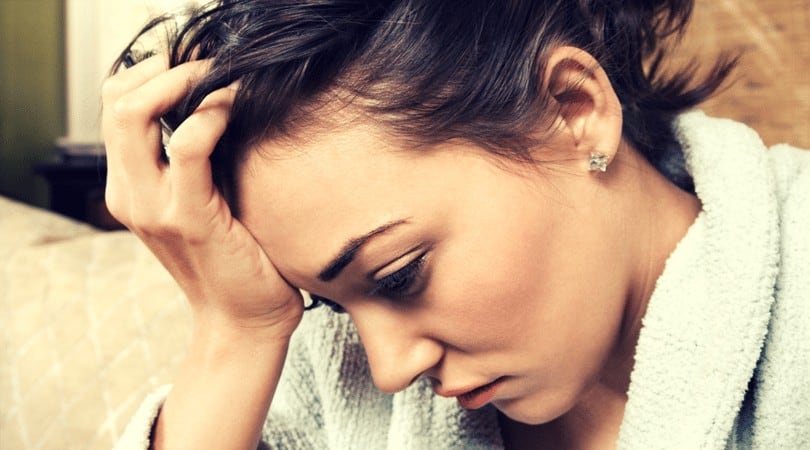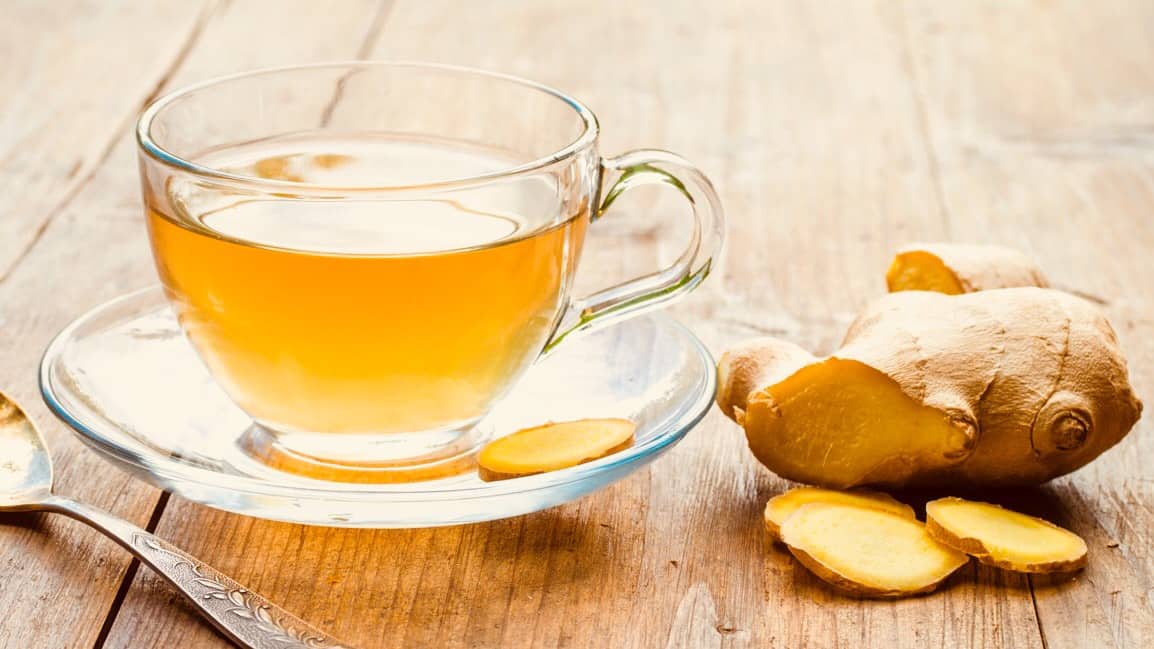A migraine headache is different from a regular headache. When a migraine headache hits, it comes with other symptoms, too. These symptoms are what sets the types of headaches apart.
Symptoms of Migraines
- Nausea
- Vomiting
- Numbness in hands or feet
- Light sensitivity
- Sound sensitivity
- Inability to see clearly
Migraines can stand in the way of day to day activities, negatively impacting the life of someone who suffers from them. This isn’t an uncommon condition, either, as nearly 12 percent of people in America suffer from them.
Luckily, there are natural ways to get migraine relief. You will be able to get relief anywhere, even if you don’t have any painkillers or migraine relief medicine.
15 Tips to Stop a Migraine Naturally
1. Avoid foods that are triggers.
Some foods are known to trigger migraine headaches.
Foods That Trigger Migraines
- Processed foods
- Pickled foods
- Some cheeses such as tyramine, blue, feta, cheddar, Parmesan, and Swiss
- Alcohol
- Flavor enhancers or MSG
- Cold foods
- Chocolate
- Beans
- Dried Fruit
- Sour cream
- Yogurt
- Caffeine
You may not want to cut out all of these foods, and it won’t be necessary if you figure out which ones trigger your migraines. To try and determine which ones are causing a problem, you could keep a food journal and write down everything you eat and compare it to the days or times that you got a headache. It won’t be an instant fix, but it could be highly effective once you figure it out.
2. Try an acupressure treatment.
Applying pressure to pressure points on the body, called acupressure, can help relieve the symptoms and ease the pain.
The pressure placed on one of the points associated with migraine relief helps to relieve muscle tension and ease the pain. It is easy to do and you can do it to yourself in just a few minutes. Other pressure points help ease symptoms such as nausea and vomiting, offering further relief.
3. Use lavender essential oil.
By breathing in the scent of lavender essential oil, you may be able to get some relief. A study on migraines showed that those who inhaled this essential oil for 15 minutes got rid of their migraines more quickly than those who didn’t.
You can also put lavender essential oil directly on your temples to help with migraine relief. This has also been proven to help decrease the symptoms.
4. Use peppermint essential oil.
By diluting peppermint essential oil with a carrier oil (such as coconut oil or olive oil), and then applying it to the temples and forehead, the symptoms of a migraine may be eased. When you feel one coming on, give this method a shot and it could possibly stop it from continuing. The peppermint oil increases the amount of oxygen there is in the bloodstream, which eases tension and can stop the symptoms.
5. Do yoga.
Yoga is known to ease the intensity of migraines as well as lessen the frequency and duration of them. This is possible because yoga improves the symptoms of anxiety and releases tension in the body.
Through the deep breathing involved with yoga, and the concentration required to hold poses, your mind will be taken off the pain. By the end of the yoga session, you may feel some relief. With regular yoga sessions, your migraines will likely happen less frequently.
6. Consume more magnesium.
In many people who suffer from migraines, magnesium deficiency is a problem. For those with the deficiency, consuming more magnesium or taking a supplement has helped lessen the frequency of migraines.
To consume more magnesium, there are many easy snack options that will do the trick.
Foods With High Levels of Magnesium
- Sesame and sunflower seeds
- Almonds
- Brazil nuts
- Peanut butter
- Milk
- Eggs
- Oatmeal
- Cashews
- Peanuts
7. Get weekly massages.
By relieving muscle tension at the trigger points, getting massages regularly may lessen the frequency of migraines. It lessens them because it helps you cope with stress better while decreasing your heart rate, anxiety levels, and cortisol levels.
8. Find positive outlets for stress.
When you get stressed out, you become tense, your blood pressure increases, and your blood sugar drops. All of these problems can lead to a migraine. Instead of letting your stress continue to build, finding a positive outlet for stress can help prevent migraines from occurring.
A positive outlet for stress could be anything that you enjoy and that eases your mind. Coloring, going for a walk, listening to music, or even cleaning are all possibilities. It all depends on what works best for you.
9. Consume more water.
Coffee, alcohol, and sugary drinks are dehydrating, and many of us drink these options more often than we choose to drink water. Lack of water can lead to migraines, so make sure you’re drinking enough water each day to try and prevent them from occurring. If you feel a migraine coming on, try drinking a glass of water or two and see if that helps the problem.
To get water in your body, you don’t just have to drink it. There are some foods with more than 90% water content in them. Snacking on these foods can help increase your water levels and decrease the frequency and duration of your migraines.
Foods With High Water Content
- Cucumbers
- Cantaloupe
- Grapefruit
- Strawberries
- Watermelon
- Oranges
- Apples
- Cabbage
- Spinach
- Squash
- Blueberries
- Pineapple
10. Get some rest.
Inadequate sleep is linked to the cause of migraines. Following a sleep schedule that leaves you feeling well rested the next day can be key to the prevention of migraines.
If a migraine has already started, try resting in a dark, quiet room. This is known to relieve symptoms and ease the pain.
11. Use a cold compress.
Not only does ice help numb a headache, but it also reduces the inflammation that is present with migraines. You can use ice, cold water, or even a cold washcloth if nothing else is available.
When using a cold compress, place it at the base of your neck. Leave it there as long as possible, and within a half hour, the pain should have decreased.
12. Consume ginger.
Ginger is known for its medicinal properties and has actually been proven to give more migraine relief than prescription medicine that is specific to migraines.
There are different ways to consume ginger, including boiling it and eating it plain or boiling it and drinking warm ginger water.
13. Take a warm bath.
By soaking in a tub of hot or warm water, you are soothing the muscles in your neck and back. This eases the tension in your body, which can help ease pain and other symptoms.
Relaxing, in general, is a helpful way to alleviate the symptoms, so relaxing in a warm bath is working double duty to help you.
14. Use frankincense essential oil.
Frankincense helps to reduce the inflammation of blood vessels and reduces the symptoms of a migraine. To use this natural method, just put one drop of frankincense oil on your thumb and then press it onto the roof of your mouth.
If you don’t like the taste of frankincense, however, you can massage it into your skin instead. Your temples, forehead, and back of the neck are the best places for this.
15. Seek chiropractic treatment.
Chiropractic adjustments and spinal manipulation can help ease or completely get rid of the stress in your body. In turn, this can reduce migraines and make them less severe if they do occur.
In a study done by the Canadian Memorial Chiropractic College, it was proven that chiropractic care greatly reduced the number of migraines that occurred in the patients that were tested. Out of 729 subjects, 613 reported an improvement.
Final Thoughts
Migraines can interfere with your life and cause awful pain that prevents you from functioning normally. It is important to get ahead of the problem and figure out how to prevent them from occurring and how to ease the symptoms when one is happening. Thankfully, there are natural remedies that help with migraine relief.
These natural remedies offer options when no medication is available, but also allow you to have a more natural option anytime. Many of these methods can be done anywhere, while others require you to be at home or in a quiet place.
Everyone is different and, for each person, migraines may be triggered by something different. Likewise, the methods that work to alleviate the symptoms or lower the frequency of migraines for one person may be different for another person.














 Community
Community

